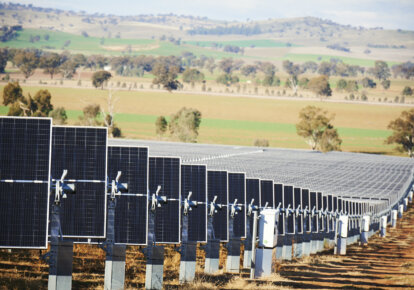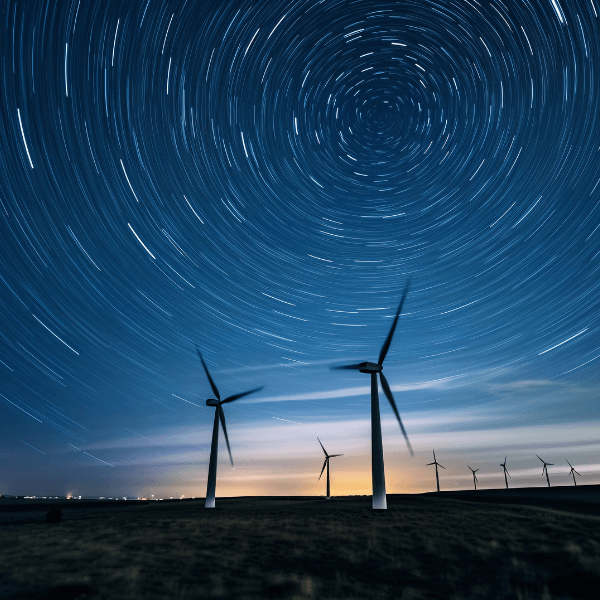Increased demand due to cool weather, higher fuel costs, and low renewable generation led to high average spot prices in June. While there were a few days where the spot price of energy exceeded $1000/MWh, these events were few and far between (unlike May, where we saw prolonged volatility in New South Wales).
Electricity price insights
Cold weather in southern mainland NEM regions resulted in higher-than-typical cumulative heating degree days, bringing increased electricity demand in Victoria and South Australia.
Average demand curves for the two regions show higher morning and evening peak demands than in previous years which suggests the higher electricity demand was at least partially due to heating as households try to alleviate the cooler temperatures and keep warm.
Higher fuel costs also contributed to higher energy prices. In Victoria gas demand was high due to increased gas-fired electricity generation to compensate for lower renewable output, as well as for direct heating for households. Due to an already tight gas market, this increased demand pushed gas prices up through June. These increased gas costs made it more expensive to run gas-fired power stations to produce electricity.
Similarly, coal-fired generators saw an increase in the value of their coal stockpiles ahead of the July 1 lifting of the domestic coal price cap introduced in 2022. This cap was a measure introduced to handle the extreme volatility in energy prices resulting from Russia’s invasion of Ukraine. While Australian export coal prices are down ~70% from their peak in 2022, they still sit ~50% higher than the recently concluded cap, raising the operating cost of coal generators while coal prices remain elevated compared to historic levels.
Finally, June was an exceptionally low month for renewable generation. While solar generation typically hits its lowest point in June, wind generation was unusually low throughout the month as well. Internal analysis indicates that daily wind generation is strongly negatively correlated with daily average price (with higher-wind-generation days having lower average daily prices). This month of low renewables (i.e. less supply) contributed to higher spot prices. While renewables push down prices when they’re abundant, this month highlights the importance of complementary technologies like storage and demand flexibility.
While May saw New South Wales hit the cumulative price threshold after a few hours of extreme pricing, there was less extreme spot price volatility in June. Rather than a small number of extreme prices, consistently higher base prices resulted in a higher average price for the month. These prices did not need to be “extreme” (for example, above $1,000/MWh) for enough of them to add up. This can be seen by examining the total number of hours above a set price point. In May, there were 8 total combined hours (across all regions) with prices above $1,000/MWh, and less than 3 in June. If we change this price threshold to $300/MWh, we see May having 76 total combined hours above this point, but June having 260 – this indicates that while June did not see “extreme” spot price volatility, prices were at an elevated level much more frequently than in May. In fact, there were more hours above $300/MWh in June than there were through the first quarter of 2024.
Changes in forward contract prices for CY25
Forward prices for 12-month futures in all mainland regions concluded the month slightly higher than at the end of May.

- New South Wales prices are up 5% from a year ago, and down 4% from May 2024
- Queensland prices are up 16% from a year ago, and 1% from May 2024
- South Australia prices are up 5% from a year ago, and 2% from May 2024
- Victoria prices are up 10% from a year ago, and 4% from May 2024
June 2024 NEM insights by state
New South Wales
- Average spot price of $153/MWh, with 15 hours of negative prices and 48 hours above $300/MWh
- $200/MWh difference in average underlying spot prices at the cheapest and most expensive times of day
- No daily intervals with an average negative price over the whole month
- 22% total renewable generation through the month
- Minimum demand of 6,297 MW
- Peak demand of 12,223 MW
Queensland
- Average spot price of $125/MWh, with 101 hours of negative prices and 37 hours above $300/MWh
- $270/MWh difference between the average underlying prices at the cheapest and most expensive times of day
- Average underlying price was negative from 11:45 AM to 1:30 PM
- 23% total renewable generation through the month
- Minimum demand of 4,362 MW
- Peak demand of 8,651 MW
South Australia
- Average spot price of $177/MWh, with 50 hours of negative prices and 86 hours above $300/MWh
- $150/MWh difference between the average underlying prices at the cheapest and most expensive times of the day
- No daily intervals with an average negative price over the whole month
- 54% total renewable generation through the month
- Minimum demand of 550 MW
- Peak demand of 2,587 MW
Tasmania
- Average spot price of $178/MWh, with 14 hours of negative prices and 47 hours above $300/MWh
- $100/MWh difference between lowest and highest time-based average underlying spot price
- No daily intervals with an average negative price over the whole month
- 87% total renewable generation through the month
- Minimum record of 1,076 MW
- Peak demand of 1,774 MW
Victoria
- Average spot price of $164/MWh, with 25 hours of negative prices and 42 hours above $300/MWh
- $150/MWh difference between lowest and highest time-based average underlying spot price
- No daily intervals with an average negative price over the whole month
- 27% total renewable generation through the month
- Minimum demand of 3,887 MW
- Peak demand of 8,442 MW
June temperatures
While the Bureau of Meteorology previously forecast a warmer and drier June, the month came in line with previous Junes for the NEM. Victoria and Tasmania saw average rainfall around 20% less than normal. For the other regions, rainfall was close to typical for June. When examining cumulative heating degree days (HDD), New South Wales and Queensland are tracking to have one of the warmer winters (with a low cumulative HDD), whereas Victoria and South Australia have one of their coldest seasons (with a high cumulative HDD).
June continued the trend of setting new warm temperature records when examining worldwide temperatures. This is now the 13th straight month of this trend.
Looking ahead to July
Similar to previous months, the Bureau of Meteorology has forecast higher-than-usual maximum and minimum temperatures across most the NEM. For rainfall, the Bureau has forecast a wetter-than-normal July for New South Wales and the southern half of Queensland, though lower-than-normal rainfall across southwestern Victoria and Far North Queensland.
The Bureau’s climate models remain in “La Niña Watch” indicating that there are signs a La Niña may develop later this year. This would bring cooler than average maximum temperatures across most of mainland Australia (south of the tropics) and increased rainfall.
On the outage front, there aren’t many baseload outages planned for the month of July, which is typical for this time of year, as there is increased heating demand and typically lower renewable generation. Stanwell has planned a 55-day outage from early June to the end of August which will take 365 MW away from Queensland’s baseload supply. AGL has a short, 4-day planned outage for a unit of Bayswater in New South Wales in mid-July which will take 660 MW out of New South Wales. As always, the risk of unplanned outages remains, resulting in reduced capacity at any time. This is evident as at the time of writing, there is an additional 750 MW of unplanned coal outages in New South Wales from a unit at Eraring and 590 MW in Victoria from a unit at Loy Yang A.
While initially planned to return on June 30th after more than 1000 days of outage, Unit C4 at Callide Power Station in Queensland pushed back its return to service date to the 22nd of July. On this date, it will return to partial capacity, and then ramp up to full capacity after further testing.
Any questions? Our energy specialists are here to help.
If you’re an existing Flow Power customer, don’t hesitate to reach out to your account manager.
If you’re not a Flow Power customer, feel free to contact our friendly team:
1300 08 06 08
Alternatively, you can submit your questions through our website contact form here.














